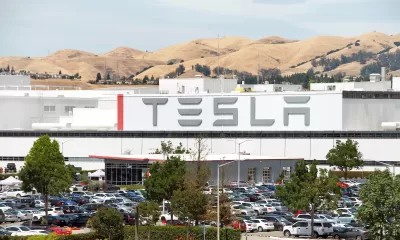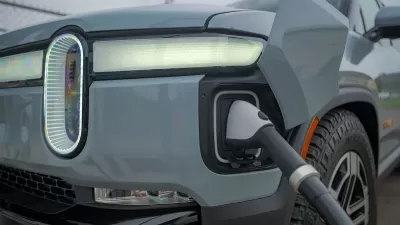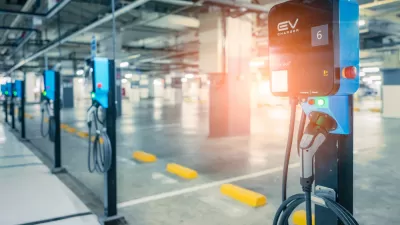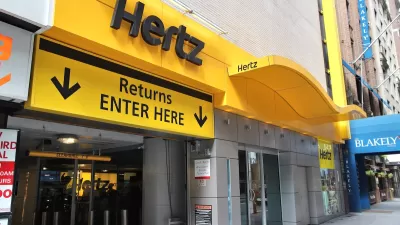A Wall Street Journal investigation found multiple and repeated violations of California’s air quality rules.

“Nothing says ‘green car company’ quite like being worse for air quality than every company in the state of California except for Chevron,” writes Collin Woodard in Jalopnik.
This is the case for Tesla, whose Fremont, California factory “violated air-pollution permits at its Fremont factory 112 times over the past five years and alleged it repeatedly failed to fix equipment designed to reduce emissions, releasing thousands of pounds of toxic chemicals in excess of permissible limits into the surrounding communities,” according to a recent Wall Street Journal article. “Their investigation found that not only were corporate bosses aware the Texas factory was polluting outside of regulations and that employees expressed fear they would lose their jobs if they reported environmental issues.”
Meanwhile, in Texas, the company removed itself from Austin’s jurisdiction to get around water pollution standards. “Sometimes during rainstorms, Tesla discharged a sludgy mix of mud and chemicals from occasional spills outside the plant, turning a ¾ mile stretch of the Colorado River into a mucky brown slick, according to pictures and videos viewed by the Journal.”
FULL STORY: Tesla Factory In California Pollutes So Much It Is Second Only To An Oil Refining Company

Alabama: Trump Terminates Settlements for Black Communities Harmed By Raw Sewage
Trump deemed the landmark civil rights agreement “illegal DEI and environmental justice policy.”

Planetizen Federal Action Tracker
A weekly monitor of how Trump’s orders and actions are impacting planners and planning in America.

The 120 Year Old Tiny Home Villages That Sheltered San Francisco’s Earthquake Refugees
More than a century ago, San Francisco mobilized to house thousands of residents displaced by the 1906 earthquake. Could their strategy offer a model for the present?

LA’s Tree Emergency Goes Beyond Vandalism
After a vandal destroyed dozens of downtown LA trees, Mayor Karen Bass vowed to replace them. Days later, she slashed the city’s tree budget.

Sacramento Leads Nation With Bus-Mounted Bike Lane Enforcement Cameras
The city is the first to use its bus-mounted traffic enforcement system to cite drivers who park or drive in bike lanes.

Seattle Voters Approve Social Housing Referendum
Voters approved a corporate tax to fund the city’s housing authority despite an opposition campaign funded by Amazon and Microsoft.
Urban Design for Planners 1: Software Tools
This six-course series explores essential urban design concepts using open source software and equips planners with the tools they need to participate fully in the urban design process.
Planning for Universal Design
Learn the tools for implementing Universal Design in planning regulations.
Ada County Highway District
Clanton & Associates, Inc.
Jessamine County Fiscal Court
Institute for Housing and Urban Development Studies (IHS)
City of Grandview
Harvard GSD Executive Education
Toledo-Lucas County Plan Commissions
Salt Lake City
NYU Wagner Graduate School of Public Service





























